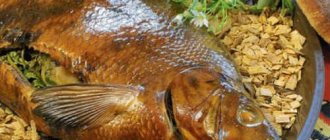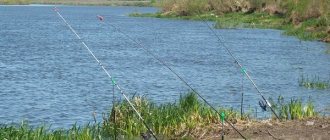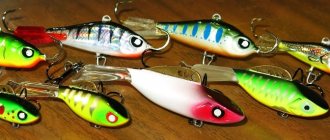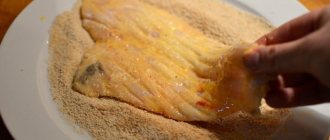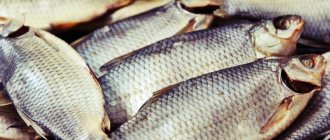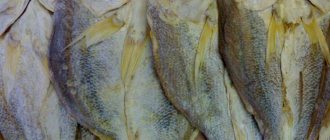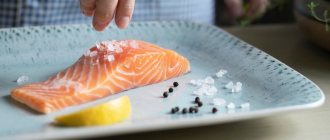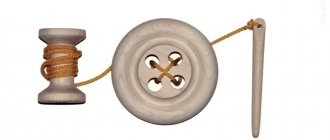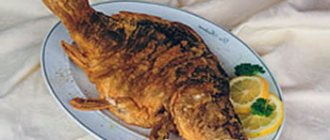Fish cutting technology is well known to professional chefs – they study it in detail in the process of their preparation. But at home, it is extremely rare to obtain precious fillets of sea fish with your own hands. Therefore, we invite you to know how to properly cut fish with minimal losses - the article talks about how to get a clean fillet without bones and skin.
To simplify the work, you need to prepare the tools in advance. The board should be heavy and not slip on the surface of the tabletop. Knives need to be sharpened well in advance. It is better to remove some parts with a special knife or scissors for cutting fish.
How to clean raw whole fish
You can buy a whole raw fish that has already been prepared by the seller, gutted and scaled, but the fish will still require further processing. Its gills, fins, individual scales, as well as blood and remains of entrails may not have been removed. Before cleaning, choose methods of cutting fish that allow you to do this with minimal time and effort.
The exact sequence of cutting fish is presented below step by step:
- Cut off any sharp fins if there are any. Place the fish on its side. Using a butcher knife or paring knife, make shallow cuts (about 10-12mm deep) along both the top (dorsal) and bottom (anal) fins.
- Remove the fins. Use fish tweezers, needle-nose pliers, or a kitchen towel to remove the fin along with its supporting bones. If necessary, repeat steps 1 and 2 on the other side of the fish.
- When cutting the fish, remove any remaining scales. Using the back of a strong knife, scrape off all the attached scales, starting from the tail and moving towards the head of the fish. To keep the scales from flying around, you can clean the fish inside a large bag or in the kitchen sink.
- Scrape out all the blood from inside the fish. Using the tip of a knife, open the inner film by making a cut along a strip running exactly in the middle of the fish's cavity, along the ridge. Scrape out any remaining blood and entrails and rinse the fish thoroughly.
- Remove the gills. If the gills, which look like fuzzy pink or red crescents, are not removed, cut them out with kitchen scissors, making cuts at both ends of the "crescents." Rinse the fish thoroughly inside and out under cold running water and pat dry.

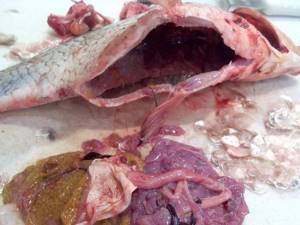


Look at the photo of cutting fish step by step, which shows the entire process of preparing the product for culinary processing:
Lightly salted chum salmon in brine - quick and tasty
This option is classic because it uses water. On the basis of which the saline solution is made. It also turns out great, the red fish is salted evenly and there is no need to turn it over during the day.
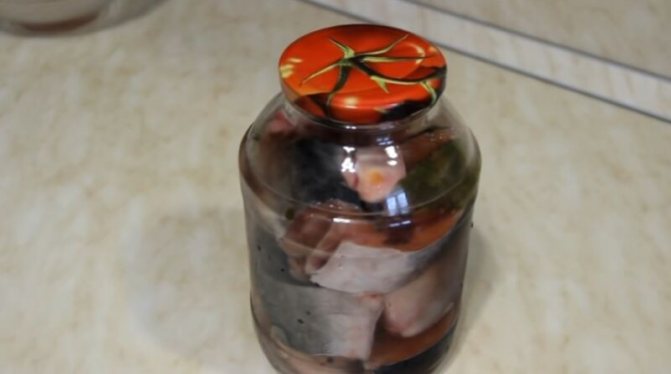
We will need:
- chum salmon - 1 pc.
For 1 liter:
- table salt - 4 tbsp
- sugar - 4 tbsp
- bay leaf - 2-3 pcs.
- peppercorns - 5 pcs. or a mixture of peppers, black and allspice
Stages:
Step 1.
First you need to prepare a marinade (brine) for chum salmon. To do this, take a couple of bay leaf leaves, a mixture of peppers (peas), 4 tbsp salt per 1 liter of water and 4 tbsp granulated sugar. Pour boiling water over it and let the liquid cool.

Step 2.
Cut the fish into these pieces. Remove all unnecessary parts from the abdomen, gut it, cut off the fins and head. First wash the carcass in water and clean it with a knife. Walk with dry paper towels.
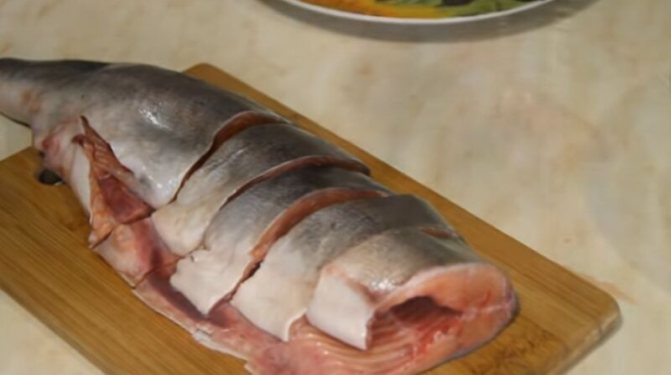
Step 3.
Place all the prepared chum salmon pieces in a glass jar and fill with brine, which should already be warm. Close with a regular metal screw cap.

Step 4.
Place the jar in a cool place for at least one day. Well, taste it afterwards, bon appetit!

How to fillet raw whole fish
Before you fillet a whole raw fish, you need to prepare it. The scheme for cutting fish into fillets is always the same. An approximate scheme for cutting fish is presented below in the form of a step-by-step algorithm:
- Make a cut just below the head. Separate the carcass from the head on one side of the fish: with the fish facing away from you, use a fillet knife to make a diagonal cut just under the gills to a depth of half the fish.
- Make a cut along the back. Starting at the head, run the knife along the back, cutting through the skin and flesh to a depth of about 1 inch until you reach the tail. You should now be able to see the spine.
- Repeat the cut. Making long, even cuts, run the tip of the knife again along the top of the spine to release the top of the fillet.
- Separate one part of the fillet. Lift the flesh at the base to expose the ribs. Trim the flesh by sliding the knife along the curve of the ribs, trying to cut off as much flesh as possible. Separate the first fillet.
- Cut off the second fillet. Turn the fish over and make another diagonal cut to remove the head. Make a cut along the top of the spine again to remove the top of the second fillet.
- Separate the second part of the fillet. Trim the flesh as before, sliding the knife along the ribs. Remove the second fillet. If desired, save the bones from lean fish to make fish stock or fumé later. At this point, cutting the fish into clean fillets is completed, and then other culinary operations are carried out.
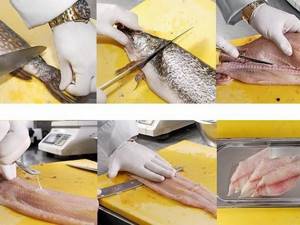
Recipes for salted chum salmon
Many recipes for salting chum salmon can be divided into several groups: express recipes and simple cooking options, preparing salted fish for the winter and how to salt chum salmon with spices (spicy) at home.
Simple and fast ways
This simple recipe for salting chum salmon can be done even by novice housewives. Required:
- 1 kg chum salmon,
- 2 tbsp. l. salt and beet sugar,
- 1 bay leaf,
- 1 onion head,
- 3 peppercorns.
Cut the prepared fish into pieces. Mix sugar and salt separately, and grate chum salmon with this mixture. Then the pieces need to be tightly placed in layers in a liter container, and chopped bay leaf and peppercorns should be distributed between them. After this, cover the container with a towel and store for six hours in the refrigerator. Rinse the fillet and lay it in layers again, only now you need to place onion rings between them. Place in the refrigerator for an hour, after which you can enjoy the taste of tender fish.
A quick technology for salting chum salmon will require the following ingredients:
- 1 kg of fish,
- 2 tbsp. l. sugar and salt,
- 0.5 lemon,
- 6 black peppercorns.
Cut the fillet into pieces (about 5 cm) and place in a deep bowl. Mix sugar and salt, roll the pieces in this mixture. Then add peppercorns and bay leaves, squeeze the lemon. Mix all this thoroughly and leave for 30 minutes at room temperature. All that remains is to wipe off excess spices from the pieces and you can serve.
Salting chum salmon for the winter
For long-term storage, you can use the recipe for dry salting for the winter:
Required:
- 1 kg chum salmon,
- 1 tbsp. l. Sahara,
- 2 tbsp. l. salt,
- 3 tbsp. l. vodka.
Mix sugar, salt, vodka and brush the fillet on all sides. Then transfer to a deep container and cover with a lid. Leave on the counter for three hours, then put in the refrigerator for 24-36 hours. For long-term storage, you need to put it in the freezer.
How to remove the skin from fish fillets
Additional filleting of fish without skin may be required for some dishes. Before removing the skin from fish fillets, do the following:
- Grasp the skin. Place the tail of the fish fillet close to the edge of the cutting board. Use a fillet knife or other knife with a long, thin blade. Cut vertically towards the skin, but do not cut through it.
- Place the knife under the fillet. Holding the skin firmly, position the blade of the knife between the skin and the meat at a slight upward angle. Move the blade back and forth across the skin, as if you were “shaving” meat. Remove the skin and rinse the fillets.
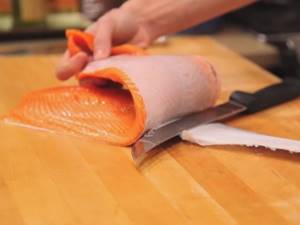
How to easily clean scales
Nowadays there are a lot of “life hacks” on the topic of how to make your life easier. People are willing to share their inventions. This is how quickly descale pink salmon . Obvious advantages:
- fast,
- the scales do not fly around the kitchen, but collect in one place.
For cleaning, use a simple closed grater. Just like with a knife, the fish is cleaned in the direction from the tail to the head. Use a large grater, like for carrots. All the husk remains inside. Do not forget to wash the instrument immediately, otherwise you will have to soak it to clean it.
How to remove bones from fish
To make cutting boneless fish simple and easy, follow these instructions:
- Before removing the bones from the fish, make a cut along the edge of the bones. In some fish, the thin bones are difficult to remove and should be removed with a knife. Place the fillet with the skin side (or where the skin was) down. Using a butcher knife or fillet knife, make a cut along one side of the thin bones and then along the other side.
- Remove the strip along with the bones. Use your fingers to pull out the thin strip of pulp containing the bones and discard it. This method works well with flat fish.

To remove small bones from raba, follow these instructions:
- Feel the bones. Place the fillet with the skin side (or where the skin was) down. Run your fingertips along the fillet toward the center. If you feel the protruding tip of the bone, it means they are still in place.
- Remove the bones. Using fish tweezers or needle-nose pliers, remove the bones one by one: grab the tip of the bone and pull it diagonally against the growth of the bone. This method preserves the appearance of the whole fillet.
How to perfectly clean fish from the smallest bones?
Everyone loves fried and baked fish. There are millions of ways to cook it in different variations, but not everyone knows how to debone fish. Some fish are very bony and the smallest bones can get stuck in the throat. What to do with such fish so that even children can eat them?
Bony fish include a lot of river fish species, such as, for example, perch, pike, crucian carp, carp or roach . And to cook such fish, fry, bake or simply boil, you need to get rid of the smallest bones. Let's find out how.
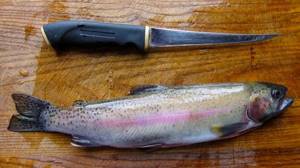
You will need a clean board or surface to work on, a strong and sharp flat-edged knife to cut the fish, and small tweezers to remove the "pin" bones.
How to check the doneness of fish
Overcooked fish will look dry and will be very hard and will flake when cut. To avoid overcooking, check the fish for doneness periodically.
To check the readiness of the fish by eye , use the tip of a paring knife to make an incision in the fish. The inside of the fish should be barely opaque, but still quite moist unless you want it rare.
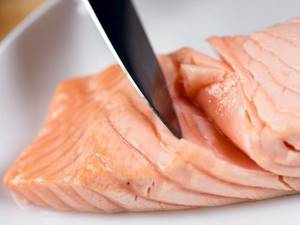
You can check the doneness of the fish using a thermometer. Insert an instant-read thermometer into the thickest part of the fish (usually near the head), being careful not to get into the cavity after puncturing the flesh. Most types of fish are ready if the temperature reaches 46-52 °C.
To check if the fish is done , insert a wooden toothpick or metal cake tester into the thickest part of the fish. They should fit freely with little resistance. Or now press this skewer against your lower lip - it should be quite warm.
How to Clean a Catfish: A Guide
So, you don’t need to peel the scales off the fish skin, which means you don’t need to
The first thing you need to do is get rid of the mucus layer. The more thoroughly the cleaning is done, the less likely it is that the marshy smell of a freshwater body of water will be transferred to the meat.
Take more table salt, roll the carcass in it, and then rinse thoroughly under running water (the procedure can be repeated several times). Next, you can proceed to cutting the carcass:
- carefully rip open the belly, first making a small incision under the head;
- we take out the insides so that, God forbid, we do not damage the gallbladder (the leaked bile will give the meat bitterness);
- remove the inner film,
- remove the gills;
- wash the carcass again,
- dry with a paper towel.
Next, you can proceed to dividing the carcass into portions and filleting (if this is provided for in the recipe). When working with fish, it is recommended to always keep salt on hand, as this product is an excellent cleanser and also acts as an absorbent (eliminates unpleasant odors).
Everyone knows that after working with fish, a characteristic smell remains that permeates the cutting board and our hands. A few drops of lemon juice and some salt will help solve this problem.
How to cut cooked whole fish
Before cutting the finished whole fish:
- Transfer to a serving platter. Whole fish can be transferred to a serving platter or served directly in the container in which it was cooked. Use a spatula and large spoon to transfer the fish to a platter.
- Cut the skin. Using the edge of a metal serving spoon, cut all the way through the skin of the top of the fish. Use a second spoon to hold the fish.
- Remove the first fillet. Slide the bottom spoon down the spine toward the ribs to lift up some of the flesh and skin, while using the other spoon to hold the fish on top.
- Remove the spine. Once you have removed all the top fillets, slide a spoon under the spine and lift it up. This will give you access to the bottom fillet.

Watch how a chef professionally fillets fish - the whole technology is clearly illustrated in the video:
Preparation:
- Cut the fillet into small pieces. Cut the onion into half rings. Salt and pepper the fish, add bay leaf. Fill chum salmon with oil.
- Prepare the marinade: mix water and vinegar. Add it to the fish.
- We put chum salmon in the refrigerator under pressure. Readiness is determined by the color of the fish - it should turn slightly white.
Salted chum salmon is an incredibly tasty appetizer. There are many recipes for how to pickle chum salmon at home. The cooking principle is almost always the same. You need salt, sugar, spices for the marinade and 2-3 days in the refrigerator for pickling. Please note that the most important factor influencing the taste of the finished product is the quality of the fish!
